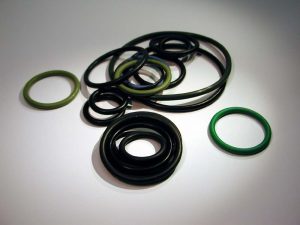How to prevent ozone damage of your O-rings
Aug 1, 2019
 The the most common seal used in a multitude of industries is O-rings. From aerospace to chemical processing, food and pharmaceutical industries, O-rings come in a variety of robust materials that offer high-quality and reliable seals for many different fields. Whether it’s heavy plant or agricultural machinery, these donut-shaped rings are suitable for the most demanding of jobs.
The the most common seal used in a multitude of industries is O-rings. From aerospace to chemical processing, food and pharmaceutical industries, O-rings come in a variety of robust materials that offer high-quality and reliable seals for many different fields. Whether it’s heavy plant or agricultural machinery, these donut-shaped rings are suitable for the most demanding of jobs.
As O-rings are used regularly in a number of applications, sometimes you may not even realise they are there until one starts to crack and then leak. One of the reasons this can happen is due to ozone exposure. In manufacturing this can cause aggravation, but out in the field ozone damage can be detrimental and if left unchecked, it can lead to serious injury or even death. This is why it’s important to know how ozone damage can occur and what you can do to prevent it.
Why ozone causes O-ring cracks
O-ring failure can be attributed to a combination of causes, but it’s mainly exposure to oxygen atoms that causes cracks in rubber O-rings. Exposure to oxygen is inevitable as it’s in the air we breathe, but typically oxygen atoms join up in pairs to form dioxygen which is the majority of the oxygen in the atmosphere. Occasionally, oxygen atoms will join in groups of three and this creates the ozone substance.
In the stratosphere, ozone is extremely useful and protects us from the sun’s harmful rays. However, up-close it can cause health problems and even in tiny concentrations it can cause cracking in rubber O-rings. Ozone concentration in the stratosphere is somewhere between two and eight parts per million but in the troposphere concentrations are above 75 parts (per billion).
Most rubbers are polymers which consist of individual units that are bonded together in a long chain. If the polymer chain develops a weak spot because of exposure to ozone, the O-rings can crack and and over time will get bigger until the damage can be seen by the naked eye.
Preventing ozone damage to O-rings
As expert manufacturers and distributors in the UK, NES are a great resource when it comes to knowing how to ensure O-rings have a long life. In industry applications, the main drivers of ozone exposure are electrical arcing, ultraviolet light and electromagnetic fields (the main reason for higher ozone levels in the upper layer). In order to prevent ozone damage, it’s vital to store and install O-rings correctly.
Firstly, inspect your storage area for any ozone-generating equipment that could cause damage to the O-rings. Ensure O-rings are not stored within range of an electric motor, or other potential sources of electrical arcs. O-rings should be stored in a dark room, away from florescent bulbs and direct sunlight. These forms of ultraviolet light can cause damage to the rubber and lead them to crack before they’ve even been used. Try not to store O-rings in a stretched state – ozone damage will typically only occur to stretched O-rings. If you have to store O-rings in a stretched state, keep them in an airtight bag until ready to use.
It’s recommended to install O-rings into the mating part within 24 hours of installing the O-ring fitting. When installing, wet the O-rings with a grease to protect from them from ozone. In applications where long-term exposure is likely, use O-rings made from ozone-resistant materials such as EPDM or fluorocarbon. EPDM O-rings are used for sealing in many industries because of the material’s excellent resistance to ozone and UV as well as heat, steam, mild acidic and oxygenated solvents.
